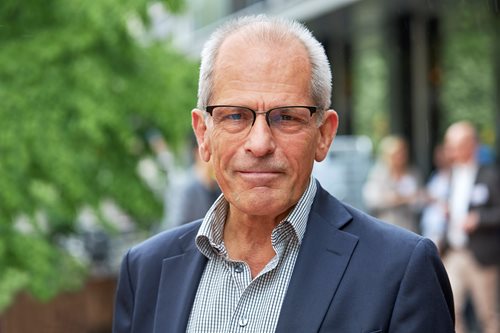Knowing how the human brain works drives digital sustainable development in forestry
Column
‘When you are done with the data transfer, press PF3, one of the buttons at the top left of the keyboard, and you will get an overview of all the data. If everything looks completely correct, press Enter and everything will be transferred to the mainframe’. The instructions come from SCA's in-house training in computerised systems for compiling and transferring production and inventory statistics in forestry - data that formed the basis for salary payments or compensation to contractors, among other things.

The year was 1987, and days of painstakingly filling in forms sent by post for optical scanning into the central computer, were replaced by data collectors in the forest and a PC on every supervisor's desk. One crucial issue was getting all the machine operators and officials on board with the change. It worked, and a couple of days a month could now be spent on more value-generating tasks than filling in forms. The innovations of the time; the development of PCs, data collectors and stable data transmission, via copper wire, were the keys to the change which was one of many early steps in using IT in forestry on a broad scale.
Just over 30 years later, most Swedish forestry companies and a number of research providers were brought together in the Mistra Digital Forest (MDF) research programme, an eight-year programme with a turnover of almost a quarter of a billion kronor. It focuses on collaborative innovation and development in order to strengthen global competitiveness, with regard to all dimensions of sustainable development. Innovation is a step-by-step process where long-term, large-scale efforts mean more than individual contributions. A sound reason for collaboration.
Many of the issues being developed within MDF have been discussed in forestry for decades, but insufficient computing power and high costs have been limiting factors. There is a rule that says that computing power doubles every two years. This means that the possibilities increase exponentially over time. At the same time, it is by no means self-evident that more data and huge amounts of information stored in large, power-hungry server centres will lead to the development of more sustainable forestry. Data needs to be refined in order for it to be useful for the development of tools such as automation or decision support.
As defined by the European Parliament, AI is ‘the ability of a machine to display human-like traits, such as reasoning, learning, planning and creativity’. Developing AI doesn't only require faster computers and increasingly sophisticated algorithms, it also requires a better understanding of how the human brain works in order to develop everything from machine learning for chatbots, to self-driving vehicles.
AI and other digital tools are being used in MDF to create increasingly sustainable value chains in the forest industry: this can help minimise the use of fossil fuels, increase productivity, reduce the environmental impact on soil and water, identify structures of importance for biodiversity, unburden machine operators as well as providing decision support for various forestry measures.
With the help of the opportunities provided by digitalisation, the development of forestry is in the middle of a giant leap. It's great fun and most instructive to learn about all the progress that is being made. In the remaining years of the research programme, additional questions on the impact of digitalisation on the social dimension of sustainable development in forestry, will be addressed. Just like in 1987, in order for this to be successful it will be about the way people are affected by, and how they perceive the changes.
Mårten Larsson
Chairman Mistra Digital Forest Program Board
